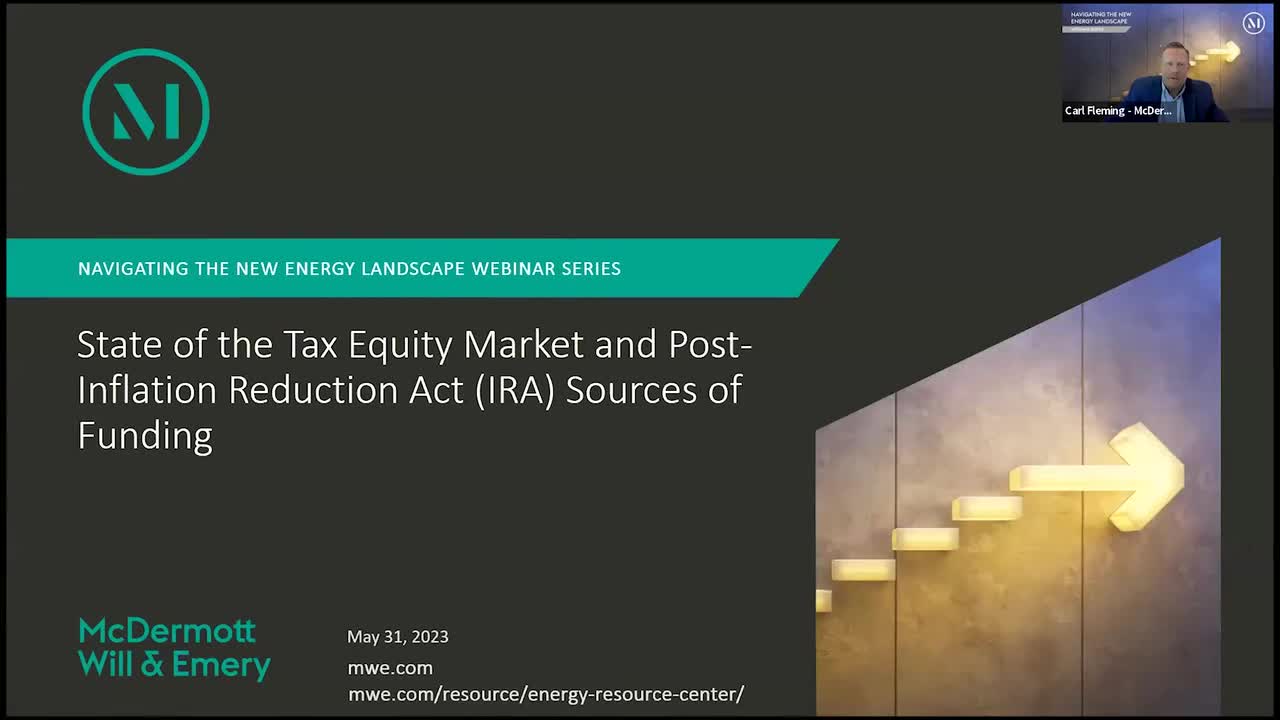Overview

During the latest webinar in the Navigating the New Energy Landscape series, McDermott Partners Carl Fleming and Heather Cooper were joined by guest Bryen Alperin, partner and managing director of Foss & Company. They had a lively discussion on the current state of the tax equity market and post-IRA sources of funding.
Key takeaways included:
- Business has surged in the tax equity market. The market is poised to continue growing. New credit accessibility and transferability benefits have led to a massive build-out of projects despite inflation and rising debt costs. The development of new structures regarding adders and increased transferability usage will support continued market growth.
- Contracts are evolving to include flexibility on guidance yet to be issued by the IRA, such as the transactability of adders. Funding is geared toward adders likely to receive support, like energy community adders, while funding for domestic content adders and low-income adders is more uncertain.
- Standalone storage, carbon capture and hydrogen are garnering interest, especially from corporate investors with an environmental, social and governance (ESG) approach. Many anticipate the market will grow with the introduction of the direct pay scheme and the potential for reliable complimentary products from tax equity investors.
- Transferability is becoming an essential tool for the market. It has created tax credit awareness among major companies’ leadership. The production tax credit (PTC) market for transferability credits has heated up, while the investment tax credit (ITC) is not yet as commoditized because of associated recapture risks.
- Multiple players are becoming buyers in the tax credit market. Insurance companies, for example, are actively involved in the state market but less so in the federal market. Larger corporations are interested in credits for both financial and ESG reasons, and smaller regional banks can now band together to access the market. Developers still prefer tax equity over transferability due to its familiarity and benefits, such as monetizing depreciation and more easily achieving step-ups on ITC.